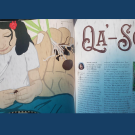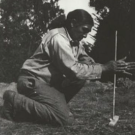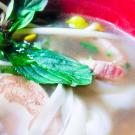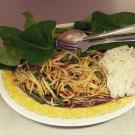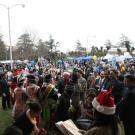Qa'-Soy: a Pomo Tale of Traditional Ecological Knowledge
RL.5.1, RL.5.2, SL.5.1, SL.5.2, SL.5.3, W.5.2, W.5.3, W.5.7, RI.5.3, HSS 4.2, HSS 4.3, HSS 4.4This 3 part unit was written by Pomo educator, weaver and artist, Elaine Quitquit Palmer. A story recollecting a cherished childhood memory, with her father, is the focal point. The story of Qa’-Soy illustrates the passing on of traditional knowledge. Students will read this story and interview an elder in their community. Some students will have a grandparent they can ask about traditions in their family. If a family member is not available, the teacher can help the student identify an appropriate community member the student may interview. “Elders are highly respected in California Native American culture. They remember our history and teach culture, share stories, and pass down traditional knowledge. It is important for the youth today to learn how to respect and communicate with their elders so that they maintain their family histories.” Elaine Quitquit Palmer
